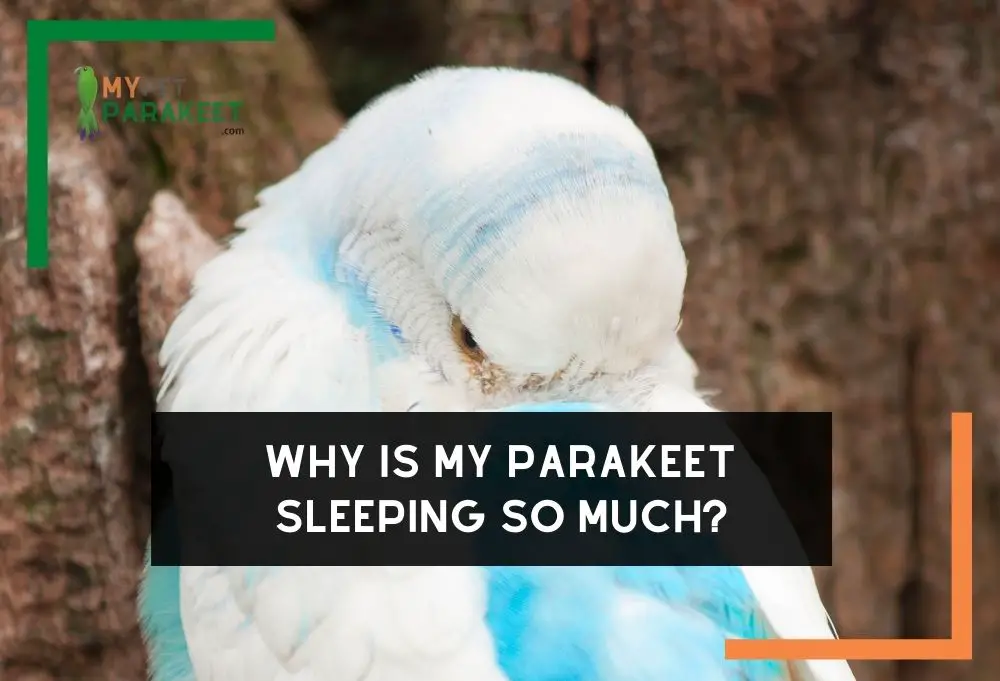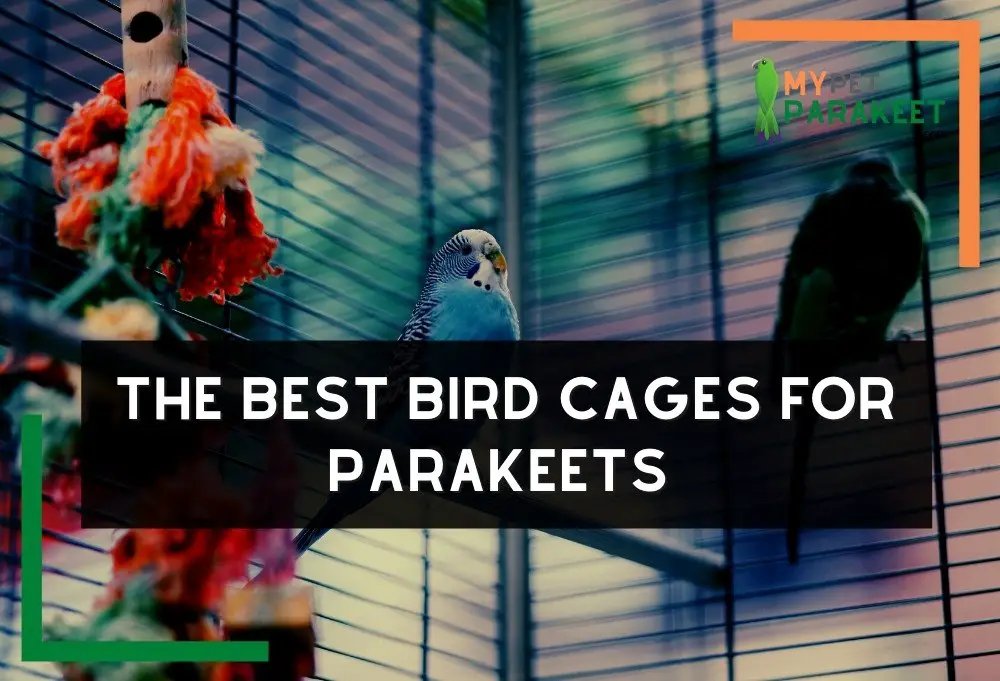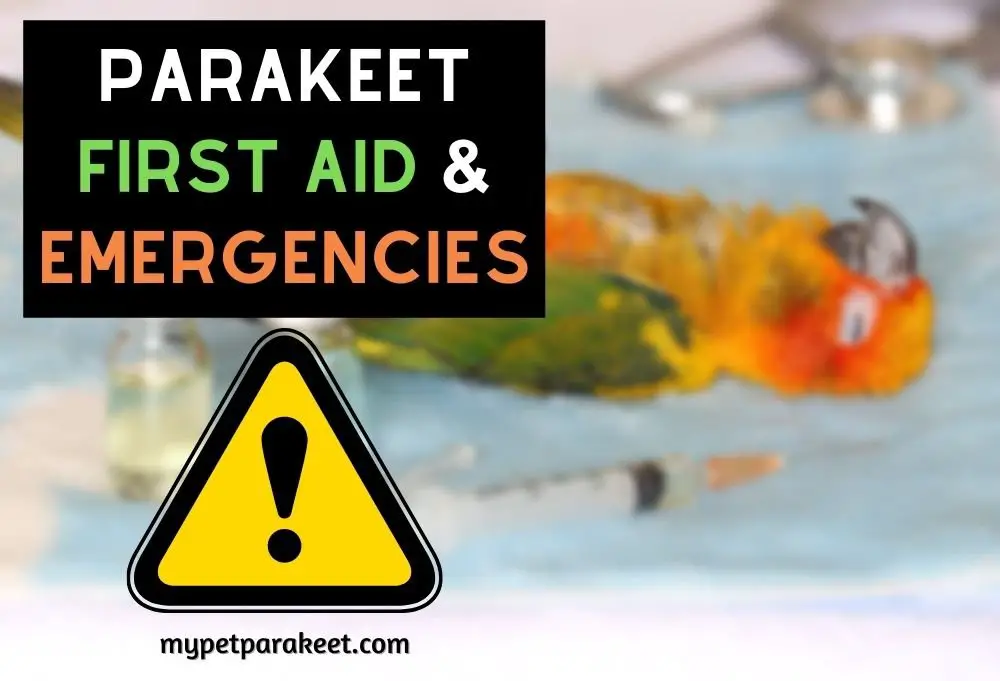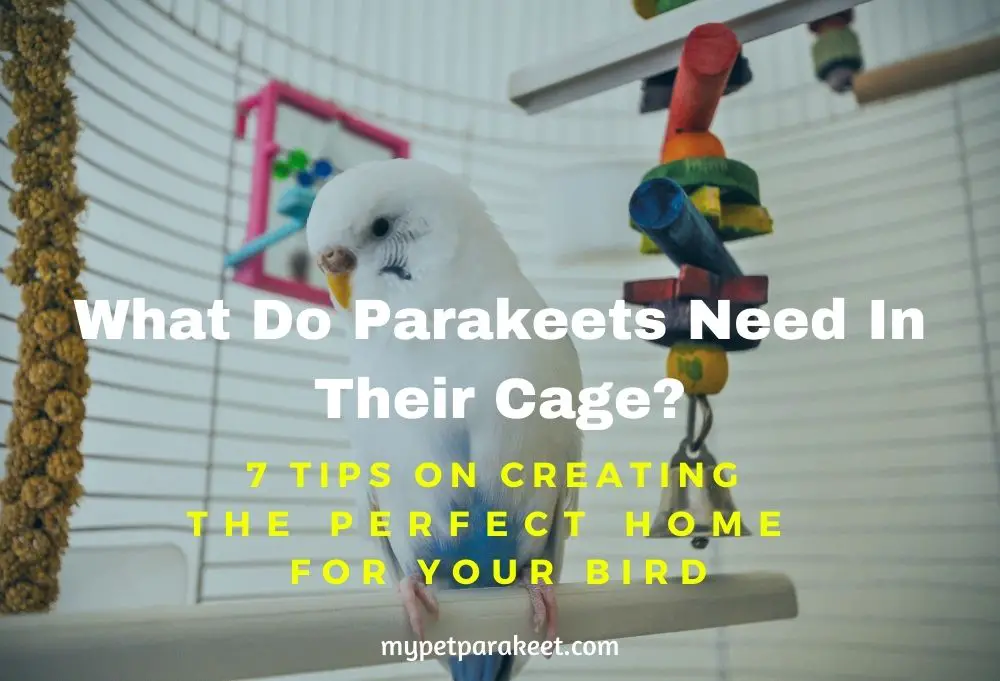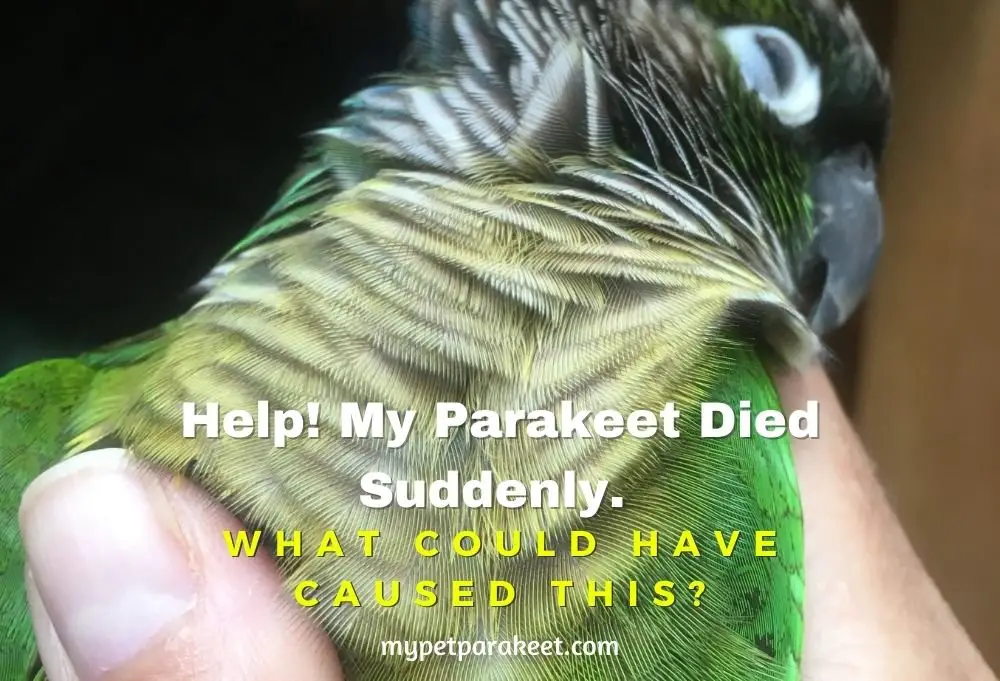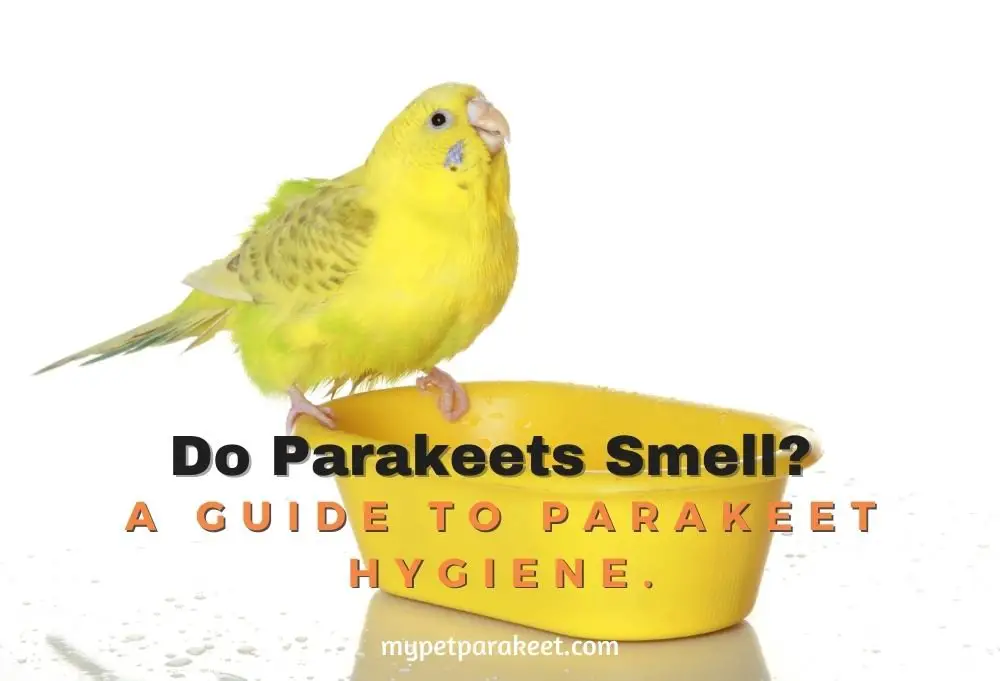If you've just become a new parakeet owner, you're probably bursting with energy, enthusiasm, and a whole range of emotions, and in all likelihood, you're wondering how to take care of a parakeet. It's a big change for you, and it's a big change for your parakeet!
The first time you hold a parakeet, it will feel like love at first sight. They are colorful and full of life, which is why they make great pets for those who want something that is both cute and entertaining.
However, as with any pet, there are certain things to know about your new responsibility. This article includes expert tips for new parakeet owners that will help new owners care for their parakeets so that they can have an enjoyable experience from start to finish!
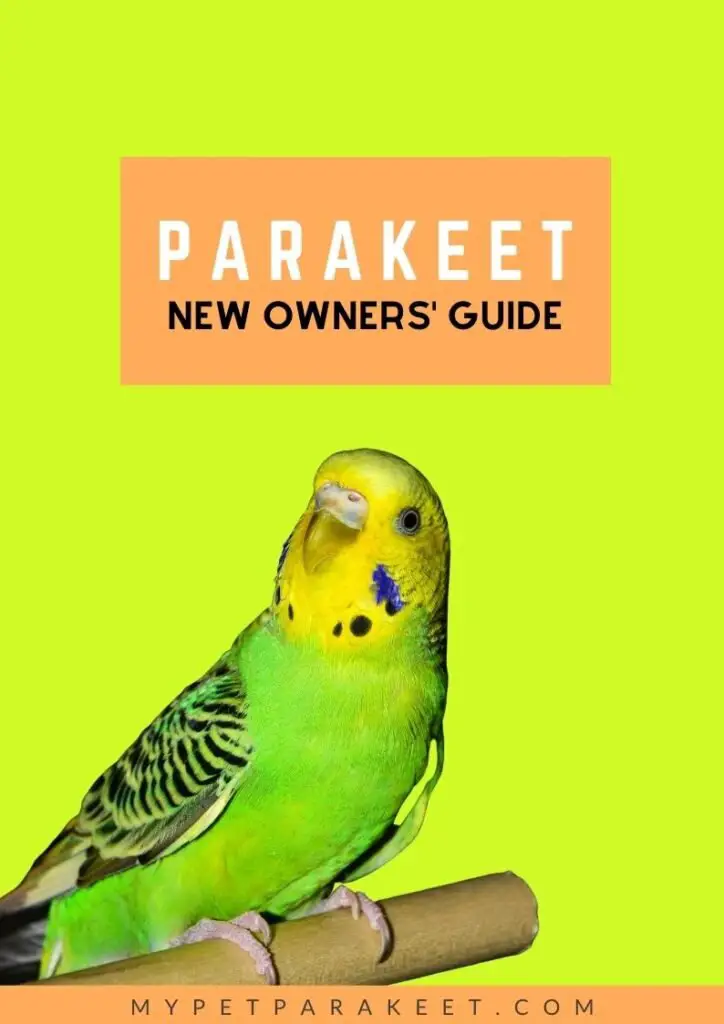
- Know Your Parakeet
- The English Parakeet and the American Parakeet
- parakeet care tips: Potential dangers.
- parakeet care tips: Your Parakeet's Feelings
- Training Your New Pet Parakeet
- 4. How to choose the right cage for your parakeet
- 5. How to clean your parakeet's cage
- 6. How to feed your pet parakeet
- 7. Where to buy pet parakeet supplies?
- 8. Maintaining your parakeet
- 9. Letting Your Parakeet Go Wild!
- 10. How To Talk To Your Parakeet
- 11. How To Play With Your Parakeet
- 12. How To Travel With Your Parakeet
- Conclusion
Know Your Parakeet
Use the diagram below to get familiar with the different aspects of your parakeet. You can use this as reference is there is ever any issue that you need clarity on. It helps to know your parakeets body parts by name.
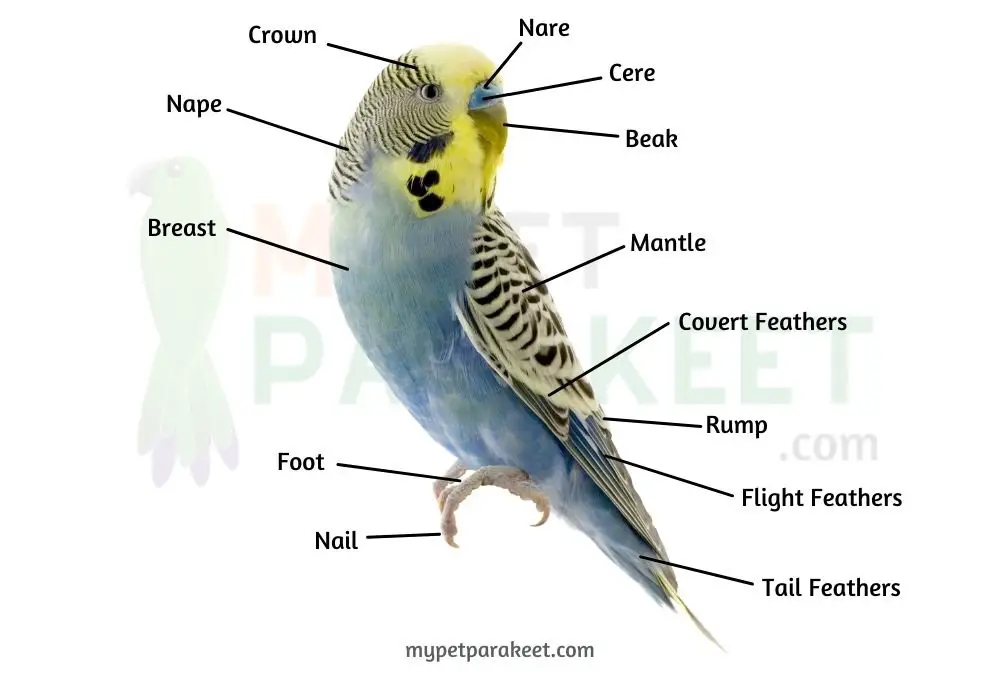
Parakeet Trivia
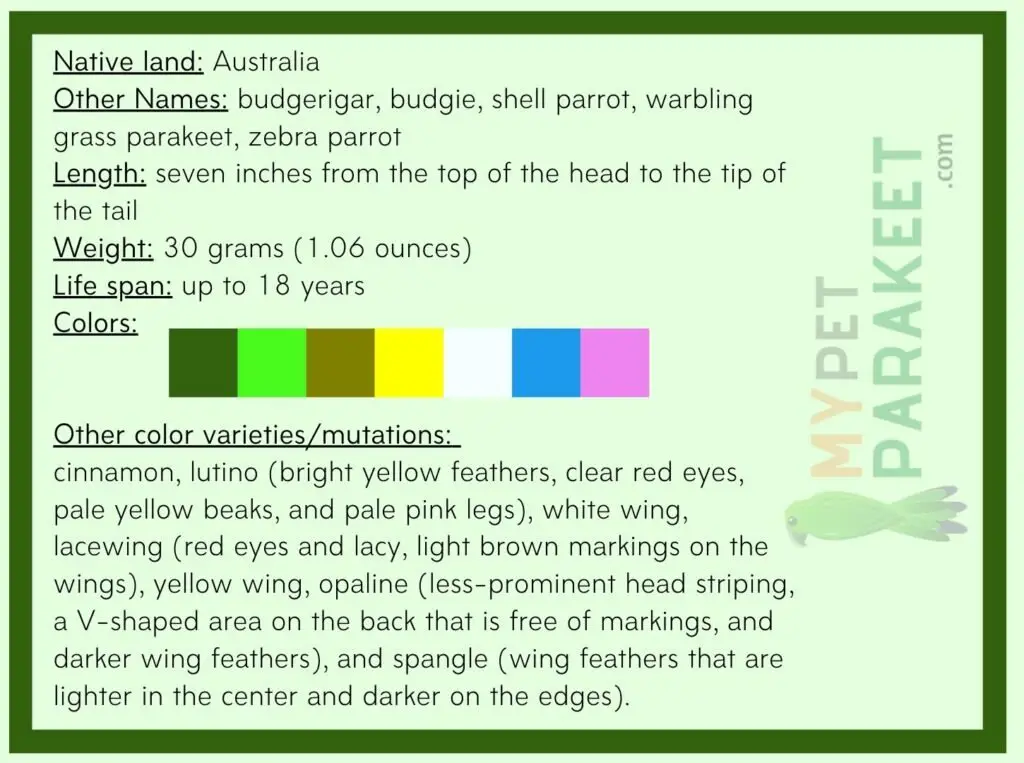
What Is A Companion Bird?
Companion birds are often offered for sale by pet shops and bird breeders and are made popular due to their friendly nature and their ability to learn special tricks.
Companion birds are usually small in size, and they have no problem living in crowded houses. They are primarily pets that people keep for the purpose of keeping them company.
The English Parakeet and the American Parakeet
When shopping around for a parakeet, you will notice that there are two types of pet parakeets:
English parakeets and American parakeets. The American and English parakeets are a pair of small parrots that are very popular as pets. Though very similar in appearance, there are some key differences between them.
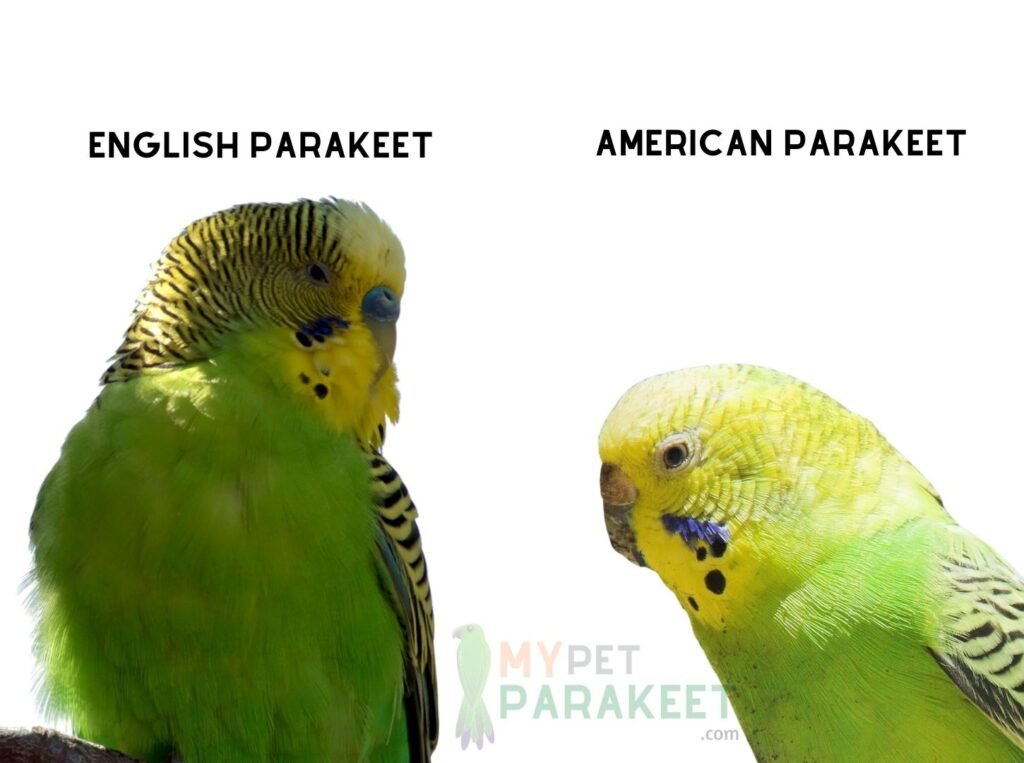
The English parakeets have the head and tail of a Yellow-headed Amazon, while the American has the head and tail of a Blue-winged Amazon.
The American parakeets are also smaller and lighter, while the English parakeets are slightly larger and heavier.
The English parakeet also tends to be less active in comparison to the more lively American parakeet.
parakeet care tips: Potential dangers.
For many first-time parakeet owners, they are perplexed at what it means to care for a feathered pet.
Some people may believe that as long as a bird gets food and water, then the needs of the animal will be met. Keeping pet birds is a demanding endeavor, but not an impossible one.
The end goal of every pet owner is to provide their animals with the care needed for physical and mental health. Pet owners responsible for caring for birds must be informed on how they live in order to best meet those needs.
A parakeet will do well in any room of the house as long as it has a large cage to play and fly around. But, be mindful of potential dangers for your pet, such as keeping the bird away from hazards like open windows or dangerous surfaces (like mirrors).
Consider installing a mirror guard on your door to avoid having the parakeet go out an open window or getting into things that might be poisonous.
Even around the house, there can be many things that are toxic to a parakeet. There are foods, plants, metals, chemicals, and fumes that are highly toxic in most households.
Parakeets are delicate creatures, so it is important to be mindful of how your actions and choices might affect them.
What Foods Might Be A Danger To My Parakeet?
There are many foods that are poisonous to parakeets. Raw eggs, avocados, onions, and garlic are just a few examples of foods that could be dangerous for your pet.
When you're out grocery shopping, it's best to take a good look at all food labels and avoid any with raw eggs or these ingredients.
Staying clear of them will save you from having to be overly cautious if you choose to let your parakeet out of its cage.
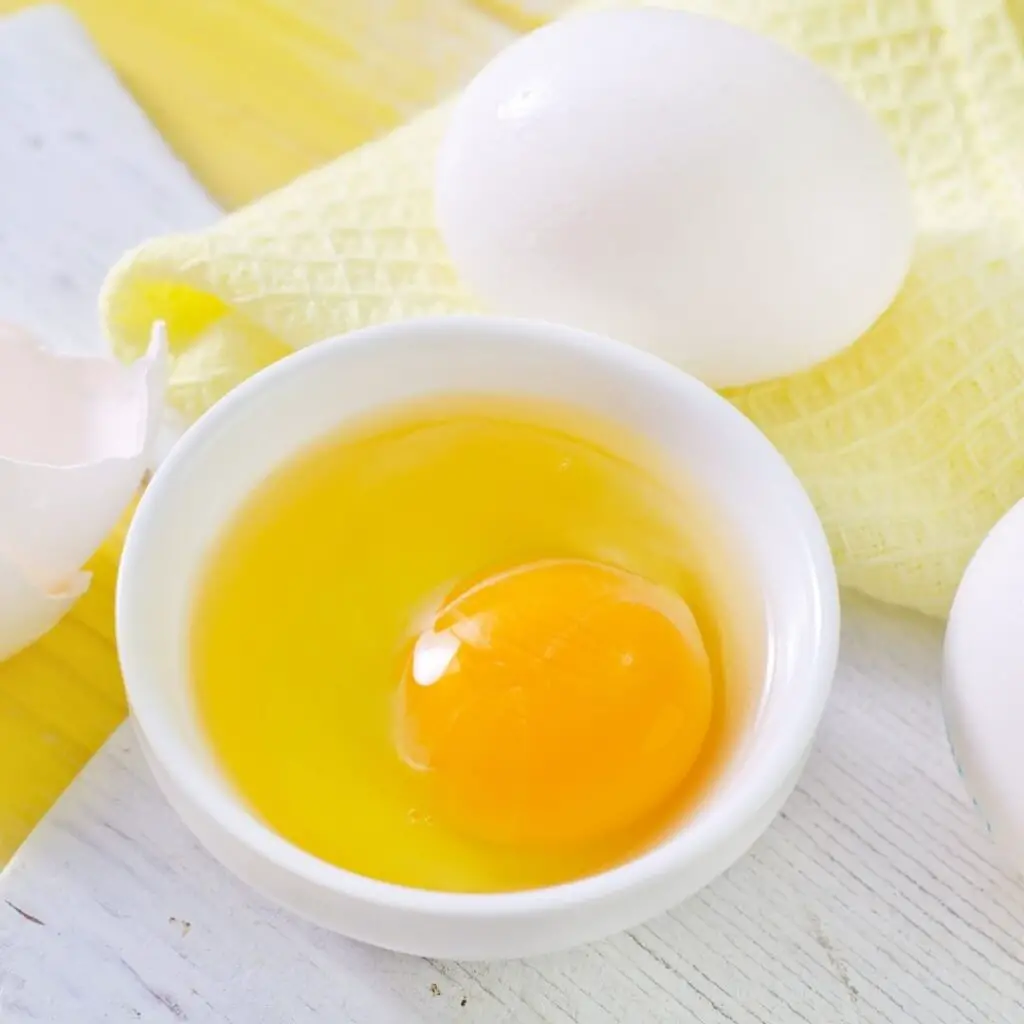
It is also recommended that you do not give your parakeet anything that you know to be toxic to humans, such as food that is salty, sugary, junk, soda, caffeinated or alcoholic.
You may find the following parakeet nutrition articles useful:
- Can Parakeets Eat Mangoes?
- Can Parakeets Eat Crackers? Be Careful, You May Not Know This!
- Can Parakeets Eat Broccoli? (Raw vs cooked!)
- Can Parakeets Eat Blueberries? How Many Is TOO Many?
- Can Parakeets Eat Parrot Food?
Household Plants Can Be A Danger To Your Pet Parakeet
Some plants, such as the aloe plant can be a danger to your pet parakeet. The sap from the plant is an irritant, and it has been known to cause reactions in people, so just imagine what it could do to your bird.
Budgieplace.com also states that the following list of plants can be toxic and dangerous to your parakeet if they chew or consume them;
- amaryllis
- azalea
- belladonna
- Bird of Paradise
- nightshade
- Bracken fern
- buttercup
- cacao
- caladium
- calla lily
- castor bean
- clematis
- coriander
- daffodil
- delphinium
- dieffenbachia
- elephant's ears
- eggplant
- euonymus
- fava bean
- figs
- foxglove
- andromeda
- mountain laurel
- rhododendron
- hemlock
- hemp
- holly
- hyacinth
- hydrangea
- iris
- ivy
- impatiens
- jack-in-the-pulpit
- jasmine
- Jerusalem cherry
- jonquil
- juniper
- different types of grasses
- lily-of-the-valley
- larkspur
- locust
- marijuana
- milkweed
- mistletoe
- morning glory
- narcissus
- nettle
- nightshade
- oak
- oleander
- peony
- periwinkle
- poison ivy/oak/sumac
- poinsettia
- poppy
- primrose
- scarlet bean
- sorghum grass
- sweet pea
- taro
- tobacco
- tomato
- trumpet vine
- tulip
- Virginia creeper
- wisteria
- yew
- zebra plant
- acorns
- holly
- honeysuckle
- asparagus fern
- Kalanchoe
- marigold
- begonia
- boxwood
- nectarine (seeds)
- oleander
- cactus
- rubber plant
- Schefflera
- shamrock
- and Easter lily
This is a long list of plants, so be sure to check over it when buying houseplants just in case! They will not necessarily cause death to your parakeet. However, they can be very toxic and dangerous to them. For example, the sap from copper beech tree leaves can cause excessive drooling. While parakeets are very sensitive to the oils in desert rose and cactus; these plants and can cause lung damage or sometimes result in death)
If you want to purchase houseplants but do not know what your options are, Budgieplace.com also says that the following list of plants are safe for your parakeet and are recommended:
- African violet
- akebia vine
- begonia
- Boston fern
- calla lily
- carpet rose (petunias),
- chrysanthemum
- croton
- Crocus
- Daffodil (bulbs)
- Dragon tree / dracaena
- fern
- fig leaf
- foxtail
- goldenrod
- geranium
- holly
- jade plant
- Japanese aralia
- jasmine
- lemongrass
- lilac
- lavender
- matrimony
- vine
- myrtle
- nasturtium
- parsley
- periwinkle
- petunia
- philodendron
- pink princess plant
- polygonatum
- primrose
- Iris (bulbs)
- orchid
- shrub
- spider plants
There are many more parakeet-safe houseplants, so always do your due diligence as different countries and climates will have different plants; there is not one list for all!
What Common Chemicals Are Dangerous To My Parakeet?
With any cleaning products or chemicals, assume they are toxic and only use them if you keep your bird away from them. You can use the same precautions with other toxic household items like antifreeze, paint thinner, oven cleaner, and detergents. Likewise, body sprays and air fresheners can irritate your parakeet's respiratory system.
The kitchen is a very dangerous place for your parakeet. Things such as Teflon (found in many pots and pans) release a colorless, odorless toxic gas when heated, and this gas can be fatal to birds.
Keep your parakeet out of the kitchen!
As a rule, keep chemicals clear of your parakeet as you would your child!
Wild Branches Can Be A Danger To Your Parakeet.
Many new parakeet owners like to collect wild branches and sticks from local parks and trees. While this is fine, there are some branches you must avoid.
Avoid the branches of peach, plum, apricot, ash, arbutus, and red cedar trees. If ever in doubt, simply ask your veterinarian if a tree is safe or not. To sterilize the wood before putting it in your parakeet's cage, use a solution of 3/4 cup of bleach per gallon of water, then heat the wood in the oven for one hour at 180-200 degrees until dry.
parakeet care tips: Your Parakeet's Feelings
What we need to remember is that pets are living creatures that have feelings and emotions and, just like us, can get scared and, as such, can sometimes act unpredictably. A pet parakeet is a member of the parrot family, and, much like a dog or cat, they love to play. They will entertain you with their silly antics, and that is when they are at their happiest.
Your parakeet is also capable of becoming stressed or even bored, and, as such, they may need a little more attention from you than normal. Make sure that your parakeet has plenty of toys to play within the cage at all times so that it doesn't get too bored or stressed out.
They also love to chew on wood and should have some safe things for them to chew on in their cage at all times so as not to hurt themselves.
One of the most important aspects is making sure that your parakeet is always hydrated. Dehydration can be a serious issue for birds, so make sure they always have plenty of fresh water and try to keep the cage environment moist.
Ensuring that you provide your parakeet with both the love and attention it needs while also following these tips for care will result in them living their happiest life possible!
Training Your New Pet Parakeet
Take time to learn how to tame your new pet. Though they may be tiny, parakeets are some of the most intelligent birds on the planet. They have large brains and are able to master many different flying and vocalizations. Their intelligence and vocalizations make them perfect for learning tricks and teaching them to talk back.
In the wild, parakeets spend most of their time climbing and foraging. They can live in small or large flocks, so they're used to interacting with others on a regular basis.
As pets, you should try to provide them with as much space as possible while also making sure that it's accessible for them to climb up high!
If you find your pet exploring his cage in a way that seems abnormal, it may be because he is trying to satisfy his natural instincts in the cage.
If this happens, it is best to provide him with more room so that he can move around in a way that feels natural to him.
What Can You Train Your Pet Parakeet To Do?
Parakeets can be trained to do a variety of tricks, including walking on your hand and balancing on your finger. You may also find that they enjoy being carried around the house in their cage so that they are up high where they feel safe. Once your bird is comfortable with you, the real fun begins, and you can teach him how to talk and dance!
Basic Tricks To Teach Your Parakeet
- The first thing you’ll need to teach your parakeet is to step up onto your hand or finger.
- Next, teach them to step onto a perch of any length.
- And finally, to accept being wrapped in a towel.
These three simple maneuvers can be taught with persistence and gentleness and will help them learn the skills needed for good pet ownership.
How To Train Parakeets To Be Social With Humans
The best time to start training your parakeet to be sociable with humans is to train it when it is young. Young parakeets with established strong bonds with their owners are relatively easy to train. It can be challenging to train adult parakeets who have not bonded with you or another human.
They may still be an enjoyable pet if all you are looking for is a happy whistling chattering bird you can enjoy from afar.
One of the reasons hand-fed and hand-reared parakeets command higher prices is because they learn to trust humans by constantly being handled when taken out to be fed, making them eager for interaction.
4. How to choose the right cage for your parakeet
What sort of things should you be looking for when buying a cage for your parakeet?
There are a few things to think about when purchasing the right cage for your parakeet. You'll want one that is big enough for him to move around in and feel comfortable, but not so large that he can't find his way back to his food dish or perch at night.
If you have more than one bird, make sure they both have their own space with plenty of room to fly from perch to perch and hang out together. The bars should be no wider than two inches so your bird can't squeeze through and escape.
And, of course, you'll want to get a cage that is easy to clean by picking one with wide doors or slide-out trays for the bottom.
5. How to clean your parakeet's cage
You'll want to make sure that you clean your parakeet's cage on a regular basis. This will help to keep it from smelling and make sure he has fresh food and water every day.
When you're cleaning, start by removing any spilled food or poop. Next, remove the paper lining of the bottom of the cage if necessary.
Spray the inside of the cage with good quality, non-toxic cleaner and wipe it down. Then replace any paper or toys that you might have removed. Remember to keep your parakeet's food fresh by replacing old seed once a week and changing his water every day!
6. How to feed your pet parakeet
The following steps will help you to feed your parakeet properly:
Start by misting the perch with a spray bottle and then filling up the water container. Fill a dish of seed with fresh, high-quality food every day. When adding new food to the dish, remove any old food from it first.
You should also provide fruit or vegetables each day for your pet bird's diet. Remember to refer to the list of safe foods for parakeets and steer clear of the food that is not safe for parakeets.
Parakeets are small birds with high metabolisms that require a diet high in protein and low in fat, so make sure that you provide them with fresh water every day! Additionally, there are many types of food pellets available on the market specifically designed for parakeets.
7. Where to buy pet parakeet supplies?
There are a number of online stores that sell parakeet supplies, and you can generally purchase most things on Amazon. You can order everything from:
food dishes,
perches,
bowls for food and water,
spray bottle with clean water,
extra containers to use as dish-cleaning bins,
parakeet toys,
wild harvest,
pet parakeet cages and even birdbaths, all on Amazon from reputable sellers.
Your new friend will love to perch on a swing or ladder, so make sure you have one in the cage. You can browse various parakeet cage set-ups and items here.
How much you should spend on your parakeet is very difficult to say because different species will have different needs when it comes to cages, perches, feeders, toys, food dishes, etc.
8. Maintaining your parakeet
Random trivia: Did you know that a bird is more likely to be in pain if you pull on its wings than if you pull on its legs?
If your parakeet's wings are too weak for you to remove the dust from the feathers, the parakeet will spread the dust over its entire body. This makes it easier for dust (and bacteria) to settle on its feathers, making them look dirty and unhealthy.
Brushing your parakeet's wings will be part of your pet's general maintenance and care, and it will help to keep it happy and healthy. When you brush your parakeet's wings, you will remove the dirt and dust from its feathers.
Your parakeet will love the attention, and you'll be doing your part to keep it healthy.
How to bath your parakeet
It's always important to be mindful of the risks when bathing your pet. A parakeet is no exception. One must exercise caution and a vigilant hand when preventing any accidents from happening, such as having falling or immersing themselves in water that might pose a risk of drowning.
I always recommend a birdbath for bathing your parakeet. They are easy to fill and rinse – just dump out the water. If you can't find one, then use a shallow bowl filled with room temperature water and let them splash in it for a while. Or try misting their wings or body.
One note of caution is not to use hot water as this could damage sensitive skin on their feet and legs. And generally don't leave your pet bird in the same dirty cage all day long or they may develop respiratory illnesses so giving the cage an occasional wipe will do wonders for helping keep your bird clean.
How to trim your parakeet‘s Wings
We have a full and in-depth post here on how to clip your parakeet's wings. However, clipping is not essential and you can tame your parakeet without clipping its wings.
9. Letting Your Parakeet Go Wild!
Does my parakeet need to go outside? – Some people may think that their pet bird should be able to enjoy fresh air and sunshine every day, but in reality, a parakeet can only safely leave its cage if it is being carried by an adult who will protect it from predators.
It's best for your new pet if you keep it indoors until you know more about what perils might await outside of the home.
10. How To Talk To Your Parakeet
Parakeets are intelligent and cunning. They can be trained to talk with a dedicated owner. If you are going to interact with your Parakeet, don't yell at it and always approach from the front. Compliment them whenever they do something good and ignore anything that annoys you. Offer food on a regular basis which should make it more responsive to you in the long-term.
11. How To Play With Your Parakeet
If you're someone with no experience in handling parakeets, it's a good idea to take them out of their cage and play with them about three times per day at first. This makes conditioning very easy. Sometimes, your parakeet will want to play on the cage's perch but this is an incorrect place for them because they can fall off the wire.
It's also pretty enjoyable – after all, birds are not really supposed to be caged pets – and as long as they like playing outside their cage and have plenty of toys inside it too! A lot of people say that playing with your bird helps make them feel less lonely so it's a great idea if you don't spend much time at home or travel often.
12. How To Travel With Your Parakeet
A few things to consider before you decide to travel with your pet parakeet.
If you plan to travel by air, check the airline's policy on a list of animals and birds that are accepted as recreational pets. Be sure to have your travel cage.
Some airlines will not allow any type of animal to fly in the cabin or carry-on, such as Parrots. This would mean transporting them strictly in crates under your seat during take off and landings.
Also check for any requirements relating to traveling from one country into another country, such as permits required etc…the particulars can be surprising so it is important for you to have a general idea about the laws regarding this process BEFORE arriving at an airport.
Conclusion
Parakeets are adorable and inquisitive, which is why it's so important to make sure that they have a lot of things to explore and play with.
You should also note that they are not a one-person bird. You might be thinking that your parakeet will love you and only you, but this is not the case. While they may come to recognize certain people as their favorites, they do not forget about those who care for them either!
Make sure to introduce them to everyone in the household so that they feel loved by all of their family members rather than just a few select ones.

